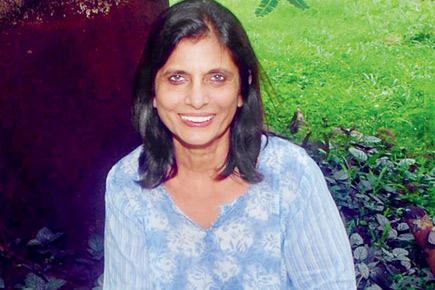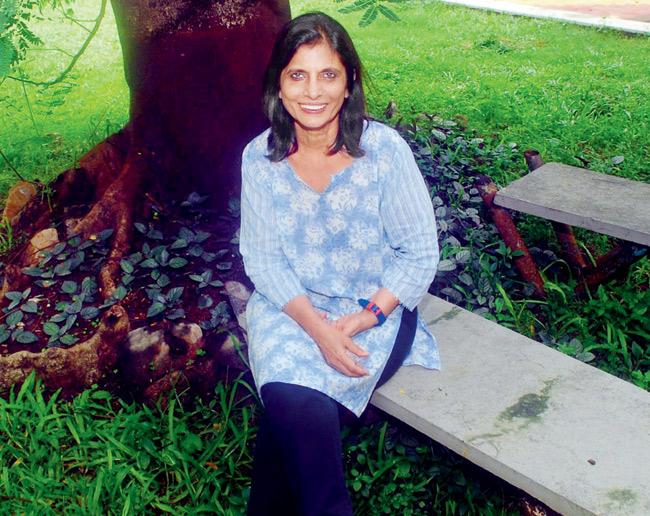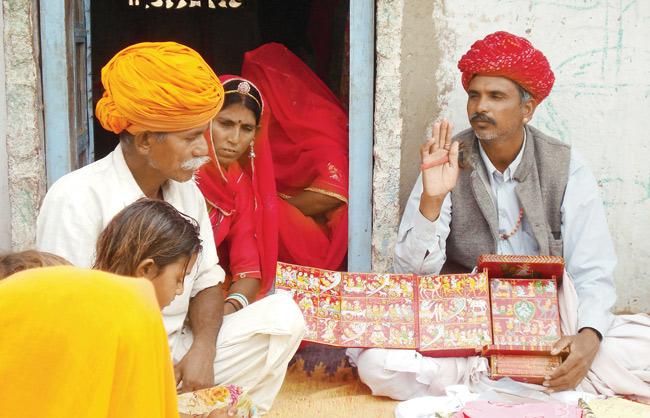A new book captures the 400-year-old art of the Kaavad, a portable shrine with hidden, painted panels, taken around by Rajasthani storytellers who sing praises of mythology and the patrons’ geneology. Kareena Gianani opens the box and is fascinated

Author Nina Sabnani
It isn’t often that a patron does not fly into a rage when he is shown his caricature on a scooter, upturned comically, with a face of a donkey. Or when he is told that his ancestors have been caricatured similarly.

Author Nina Sabnani
But then, anything is possible in the land of the Kaavad. A virtual pilgrimage Kaavad is a wooded box, and at first glance looks like a highly symmetrical object with multiple panels opening this way and that, painted with Hindu deities. Some panels, curiously, have figures travelling in cars, jeeps and planes. But in reality, a Kaavad is a portable pilgrimage.
ADVERTISEMENT

Kaavadiya Bhat Narsinh with patrons his in Balao, Rajasthan
Since 400 years, Kaavadiya Bhats (storytellers) from the Marwar district in Rajasthan carry the Kaavad to their patrons’ homes to recite stories from mythology and those of their ancestors. Thus, Kaavad allows patrons to undertake a ‘virtual pilgimage’. Patrons who would like to be painted alongside gods (in a vehicle of their choice) can commission the job to the storyteller for a fee. As for the upturned patron images with donkeys for faces — they illustrate those who fail to pay the promised fee to the storyteller!

A Kaavad is made of sheesham wood and at first glance looks like a highly symmetrical object with multiple panel openings
It took filmmaker and animator Nina Sabnani, who teaches animation at IIT Bombay, five years before she could understand Kaavad’s many secrets. Her narratives of the storytellers, Kaavad suthars and patrons now come to life in the book, Kaavad Tradition of Rajasthan: A Portable Pilgrimage, published by Niyogi Books, which will be released on September 10.
Secrets of the Kaavad
The book is an engaging read and tells the layperson all about a charming art of oral storytelling — the Kaavad’s origins, the history of the Kaavadiya Bhats, the anatomy of the shrine, its patrons and the Kaavad’s repertoire. Sabnani says that she wrote the book because there was no literature on the tradition. “It is anthropological, but very accessible. I did my PhD on the same subject, but as we all know, theses are passed on from scholar to scholar, never leaving academia.”
What makes the book sure to be an enduring account of this rich folk tradition is Sabnani’s effort to reveal the finer details of the tradition. For instance, she explains how the Kaavad reveals much about Rajasthan’s social orders and community bonding. The Kaavad, the book explains, came into existence because it was difficult to build temples in Rajasthan’s hilly terrain. More so, it was a way to include communities excluded by strong hierarchical and feudal systems of the time. No wonder the Kaavad’s patrons, even today, commission images of themselves — it is their way of entering spaces they were hitherto denied access.
Each storyteller has 100-300 patrons whom he visits once in two-three years. “The most enduring message of the Kaavad is that the story is eternal, only the way you tell it changes with time. For instance, when I heard Khojaram, an older Kaavadiya Bhat, reciting stories, I thought his storytelling was evocative and more nuanced. However, a younger storyteller, who has travelled across cities and has seen the current telecasts of the epics on TV, had a more affected style,” says Sabnani.
Improvising stories
The Kaavad tradition lives on because the Kaavadiya Bhats are very adaptable to changes in society and their patrons. They remember their patrons’ genealogies up to eight generations, so it takes them little effort to improvise on the spot.
“When a Kaavadiya Bhat was performing in the city, I noticed he would say things such as, “… phir unhonhe bhagwan ko jaldi se mobile lagaya…” which isn’t something he does in the villages. These days, recitations are shorter and they focus on genealogies,” she says.
Kaavadiya Bhats have alternate sources of income through farming and as labourers. So, the next time you pass by a Rajasthani labourer toiling away at a construction site, you have passed a storyteller by.
 Subscribe today by clicking the link and stay updated with the latest news!" Click here!
Subscribe today by clicking the link and stay updated with the latest news!" Click here!







